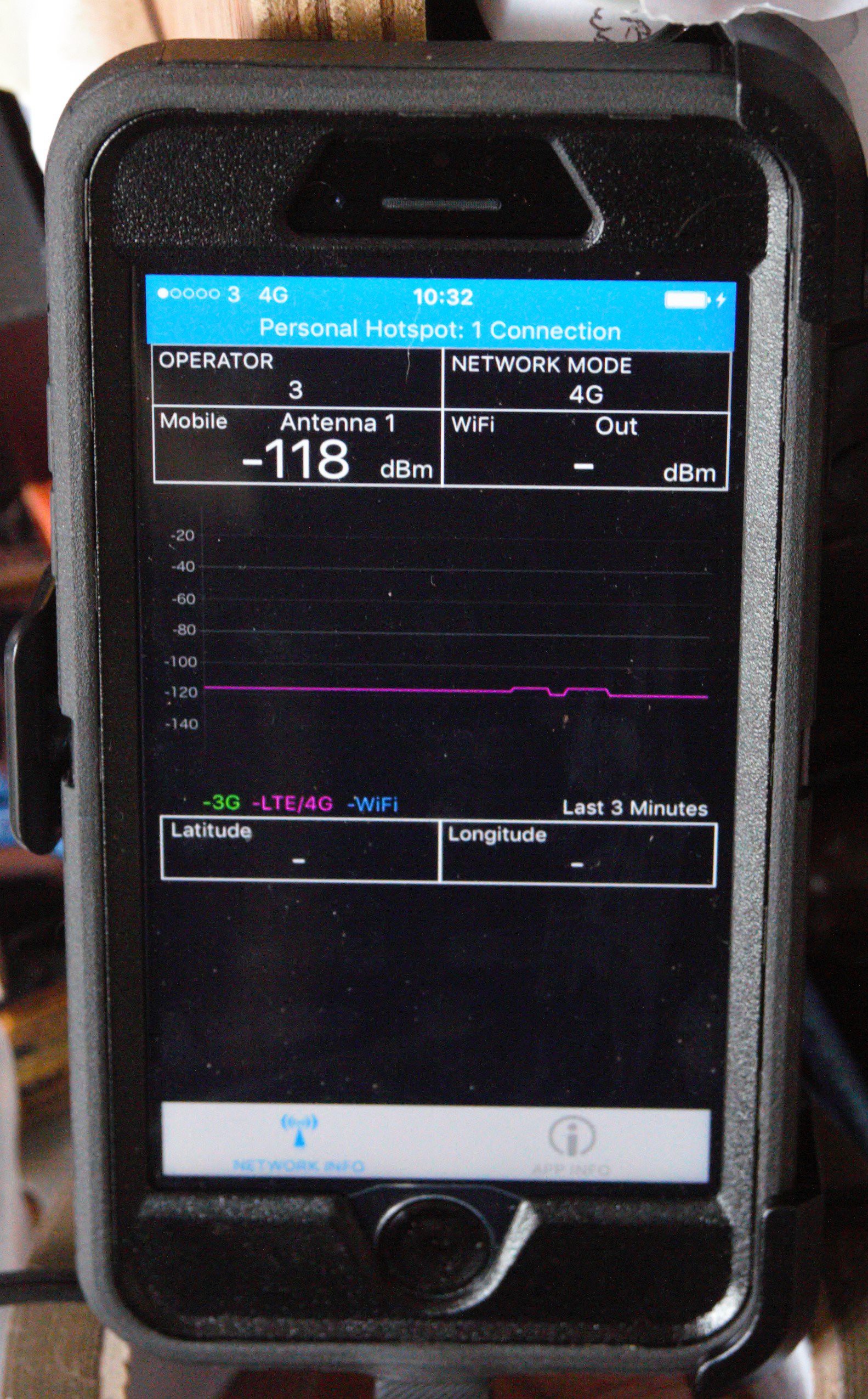-
Testing Limesuite calibration widgets using FM re-transmit
05/24/2017 at 18:48 • 0 commentsWhilst waiting for my analogue VGA PCBs to arrive from Shenzeng I thought I'd have a go at the next logical step in trying to get the LimeSDR to work as a Femtocell.
There's a lot of talk on the Lime Microsystems Myriad forum about calibration which got me thinking about why this gadget won't boost the band 20 4G signal when my DIY analogue circuits are now working and whilst the following video is not the most entertaining to watch, it does show that calibration settings can be adjusted manually.
The workflow is as follows:
- Load up blocks into Pothos to build a simple FM receiver,
- tune it to my local radio station,
- load in blocks to transmit it to another frequency 1MHz higher,
- run the program in Pothos,
- stop the program,
- connect LimeSDR in Limesuite,
- change a couple of settings in the Limesuite tab to enable transmit once more,
- check there's a response on my second computer,
- fiddle about with the various calibration widgets in Limesuite, listening for audio improvement / degradation.
Best watch the video really!
-
Must get the VGA chip working!
05/18/2017 at 08:46 • 0 commentsFeeling motivated and inspired by the recent LNA and PA successes, I now must get the VGA working. The previous two proto boards were a bit of a mess so, since I needed some stepper motor controller boards made for another project, I thought that a nice tidy board would help me figure out how to use it.
The device in question is the HMC742A VGA chip and after spending a bit more time studying the datasheet I feel 90% confident I can get it to work. Soldering the chip is a problem for me as the pitch is a tiny 0.5 mm and there's a massive GND paddle right in the middle of it. Fear not ..... I do have my
https://hackaday.io/project/20260-manual-smt-pick-and-place-machine
which is fully operational.
Here's some of the board design pics - not the prettiest looking boards in the world:
![]()
![]()
-
Project now has basic functionality!
05/14/2017 at 13:33 • 0 commentsAt last, after many weeks of battling with this project, I have now succeeded in amplifying the local 4G signal by 15 dBm. Part of the problem was that my iPhone 5, which I was using for testing, did not really work too well on 4G and since the signal is so poor where I live this made it fairly impossible to do proper experiments. After my neighbour came round with her iPhone 7 and helped me with the project, I went out and upgraded my phone to the 7. Now I can monitor the signal quality with relative ease.
Another factor was the type of indoor antenna. I switched out the normal 'whip' antenna to one with a square back plate as shown below:
![]() The RF amp that I used was an NLB-310, with 2 of the cascaded together in series. I also had success with a low noise amplifier (LNA) the QPL9065.
The RF amp that I used was an NLB-310, with 2 of the cascaded together in series. I also had success with a low noise amplifier (LNA) the QPL9065.![]() Here's the LNA module:
Here's the LNA module:![]() I also tried this variable gain amp, the Analog devices HMC742A, but I've not got it to work yet:
I also tried this variable gain amp, the Analog devices HMC742A, but I've not got it to work yet:![]() All the boards above are DIY custom design for testing purposes and can be linked together using U.FL RF cables to produce cascades.
All the boards above are DIY custom design for testing purposes and can be linked together using U.FL RF cables to produce cascades. -
Debugging - There's probably something very simple that's wrong with my set up
05/13/2017 at 14:14 • 0 comments![]()
My RF EE friend says that this project should be very simple, which is exactly what I thought when I started it! He advised not to use the LimeSDR but to go back to basic hardware, making sure that the amp components were very 'linear' for LTE use. I am trying hardware options as well, I'm not sure what his drinking/eating habits are yet, but rest assured there will be some kind of homemade product to reward him with.
There's probably something very simple that's wrong with my set up, but like diagnosing fuel starvation problems in diesel engines, just looking for leaking diesel is not the correct approach.
Upgrading my iPhone has helped a lot as it can actually receive 4G in my location - very useful! Much easier to spot it on the spectrograph:
I'm having a go at building some alternative duplex filters from scratch - they're the most obvious candidate for troubleshooting at the moment - there seems to be quite a bit of noise generated and a lot of signal strength lost by using the current ones.
-
Looking for 4G phones on Limesuite
05/10/2017 at 17:05 • 0 commentsHaving found a 4G phone on GQRX I'm now taking it to another piece of software that can eventually pull a list of register settings to be uploaded to an Arduino for control of the LimeSDR repeater via SPI when/if it actually starts to work properly!
Problems that I discovered in this test is that the receiver gain on channel B is set way too high and that the bandwidth of the whole system is probably set a bit too low.
-
Locating 4G cell phones on the RF spectrum
05/10/2017 at 12:24 • 0 commentsFor some reason, up until very recently, I've found it incredibly difficult to actually find any 4G cell phones on band 20 of the RF microwave spectrum. It's always been easy to see the base station transmitter signals but looking at the area in the spectrum where phones are supposed to be just came back completely and utterly blank! To say this was confusing is a massive understatement, but inspired by having the project get into the quarter finals of HAD 2017, I called upon the assistance of some neighbours to give me some technical advice and practical assistance.
Lured by the smell of coffee infused with chocolate mint, my actual next door neighbour came over and very generously wandered around the garden watching videos on YouTube via 4G until I was able to get a fix on her phone signal using the LimeSDR and GQRX software to work as a spectrum analyser:
Why has it taken me so long to get this result? It must be something to do with the relative positions of the transmitting phone and the receiving antenna connected to the Lime? If the two are very close together does the receiver get overpowered by the very strong phone signal?
-
From SDR to hardware, and back again.
05/03/2017 at 08:58 • 0 commentsStill struggling with this cell phone signal booster project. In theory the LimeSDR should now work, but my phone does not respond. It's hard to know what's going on without a second LimeSDR to use as a spectrometer :( I'll be working more on the hardware based solution when it rains again.
If there's anybody from Lime Microsystems reading this - please send me another LimeSDR!
![]()
-
At last a promising .ini file for the LimeSDR!
04/18/2017 at 12:41 • 0 commentsThanks to Zack (again!) at Lime Microsystems, I seem to have managed to produce a functioning repeater in full duplex mode. It does not actually help with 4g on my own phone yet as it probably needs some fine tuning.
Here's the file:
https://cdn.hackaday.io/files/20500877072000/Band_20_Repeater_01.ini
-
LimeSDR test: Limesuite was used to 'scoop up' settings generated by Pothos
04/16/2017 at 16:27 • 0 commentsI used Pothos to create a block diagram for the LimeSDR that receives a local FM station and re-transmits it 1Mhz higher at very low power.
Limesuite was then used to 'scoop up' the settings generated by Pothos with the idea of closing Pothos and recreating the whole test using Limesuite alone.
The whole test worked nicely!I then tried a similar thing in the LTE band 20 at 809 MHz, just repeating the whole base station Tx spectrum, using my trusted USD020 duplexers ..... And that worked too! I've been trying to do this for about 5 days, so why does it suddenly work now? I think the answer is that the Limesuite needs to be a 'blank canvas' before trying to scoop from Pothos, otherwise settings 'left over' from previous trials mess things up.
Files used:
https://cdn.hackaday.io/files/20500877072000/Simple_806MHz_Repeat 01.ini
https://cdn.hackaday.io/files/20500877072000/Simple 806MHz repeat 01.pothos
https://cdn.hackaday.io/files/20500877072000/FM retransmit 04.ini
https://cdn.hackaday.io/files/20500877072000/FM Re-Transmit 04.pothos
-
Noise and Insertion Loss using Band 20 Duplexer
04/14/2017 at 15:11 • 0 commentsThe animation below shows really clearly the noise created and the loss of signal incurred when the CTS USD020 duplexer is used. For comparison, when the duplexer, which is basically a pair of band filters, is used I ramped up the LNA (low noise amplifier) by 4 dB. This is not necessarily bad as the advantages of having a reasonably good band pass filter are enormous.
![]()
Cell Phone 4G LTE Repeater / Booster / Femtocell
An outside pole mounted aerial picks up 4G signals which are then filtered, amplified and re-transmitted through a second inside aerial.
 Capt. Flatus O'Flaherty ☠
Capt. Flatus O'Flaherty ☠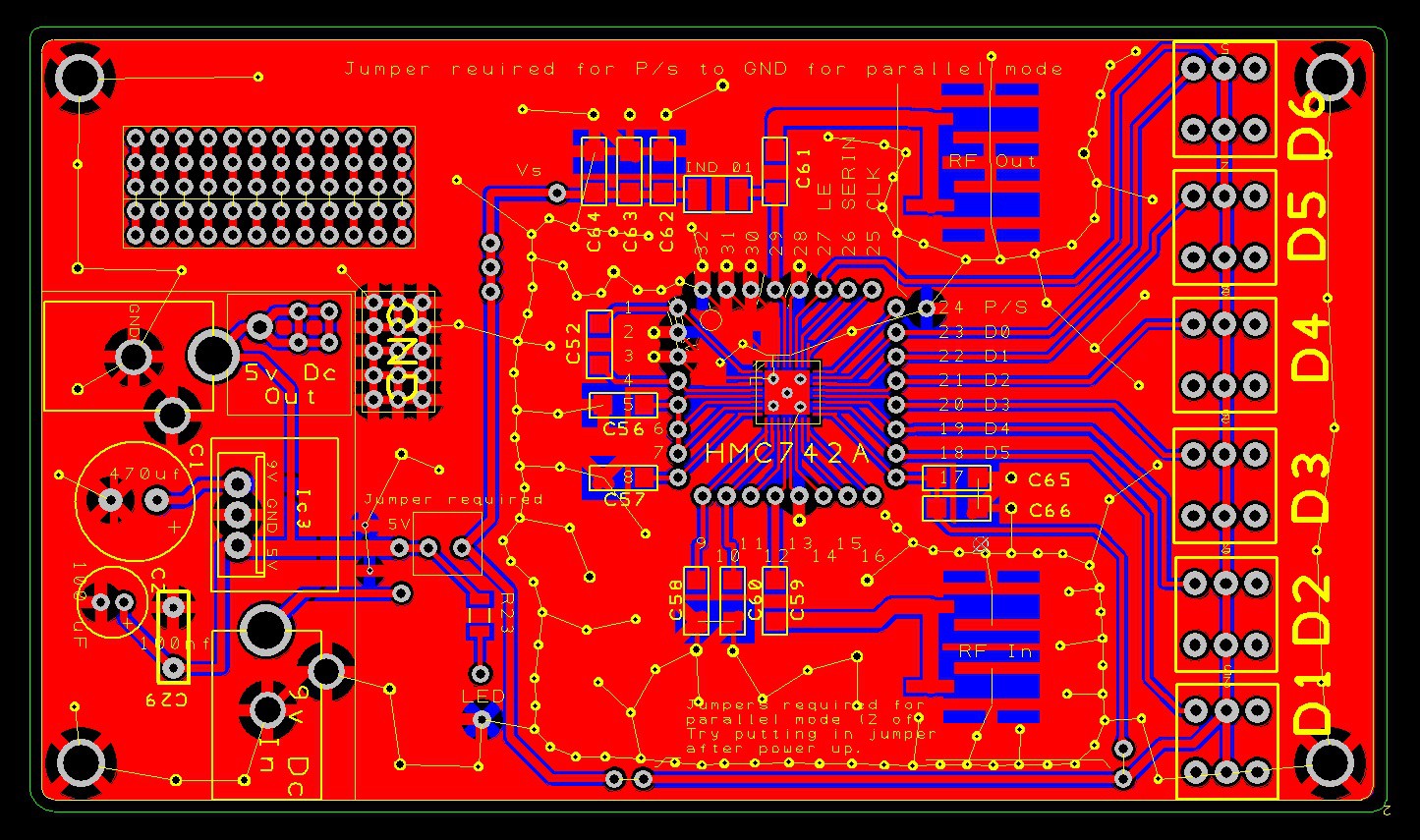
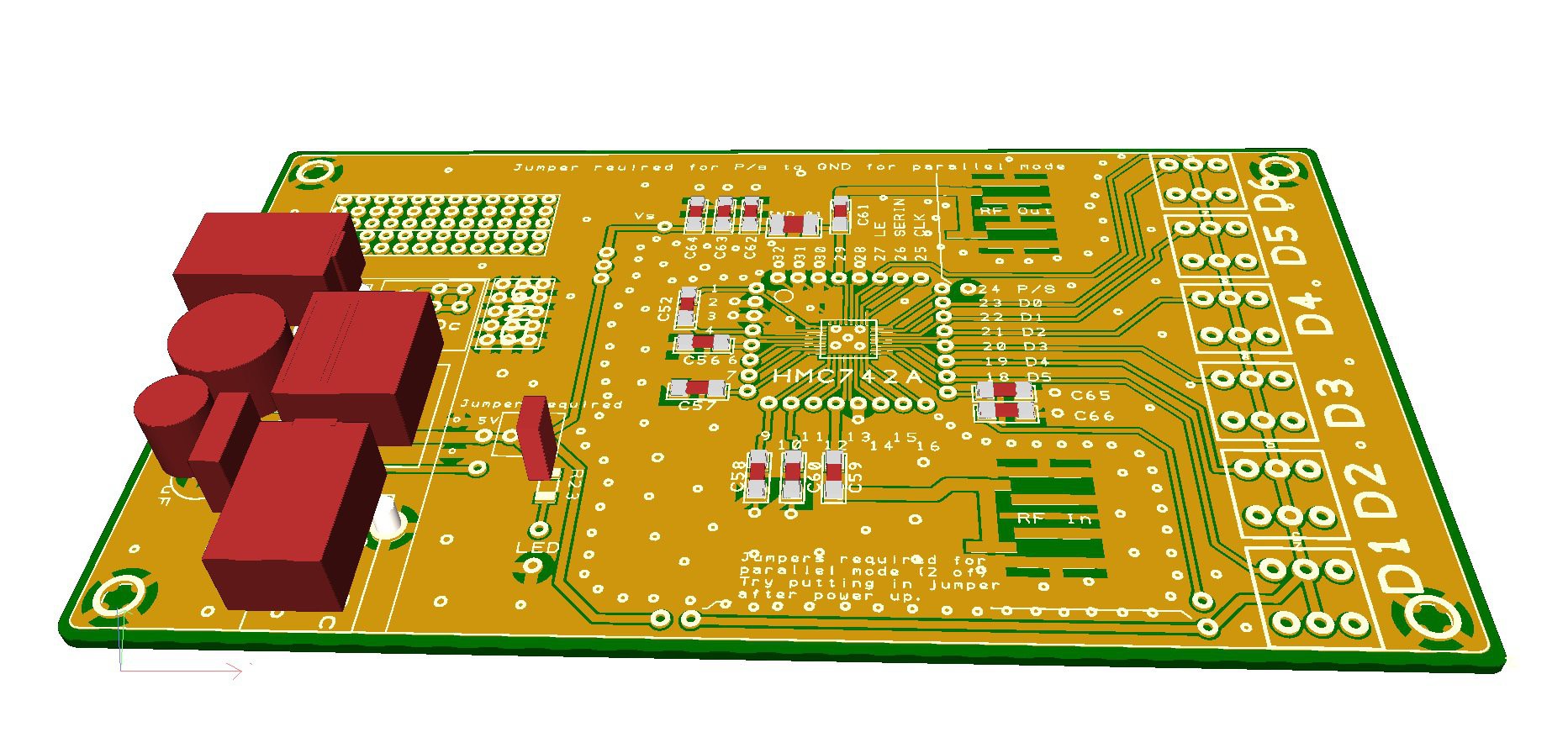
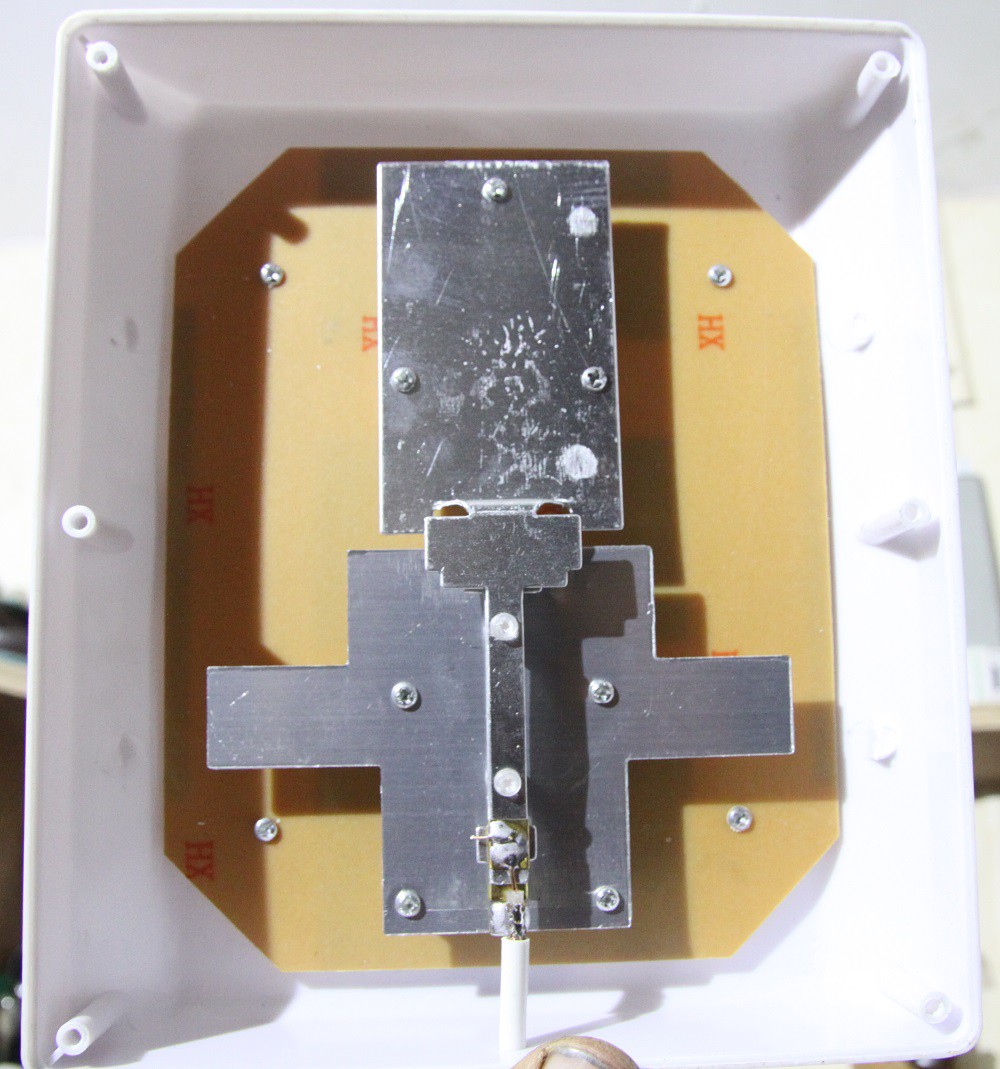 The RF amp that I used was an NLB-310, with 2 of the cascaded together in series. I also had success with a low noise amplifier (LNA) the QPL9065.
The RF amp that I used was an NLB-310, with 2 of the cascaded together in series. I also had success with a low noise amplifier (LNA) the QPL9065.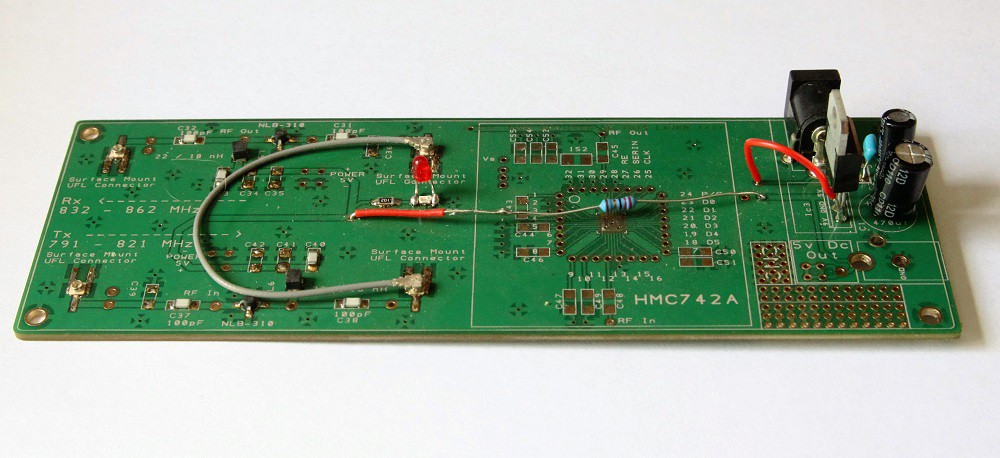 Here's the LNA module:
Here's the LNA module: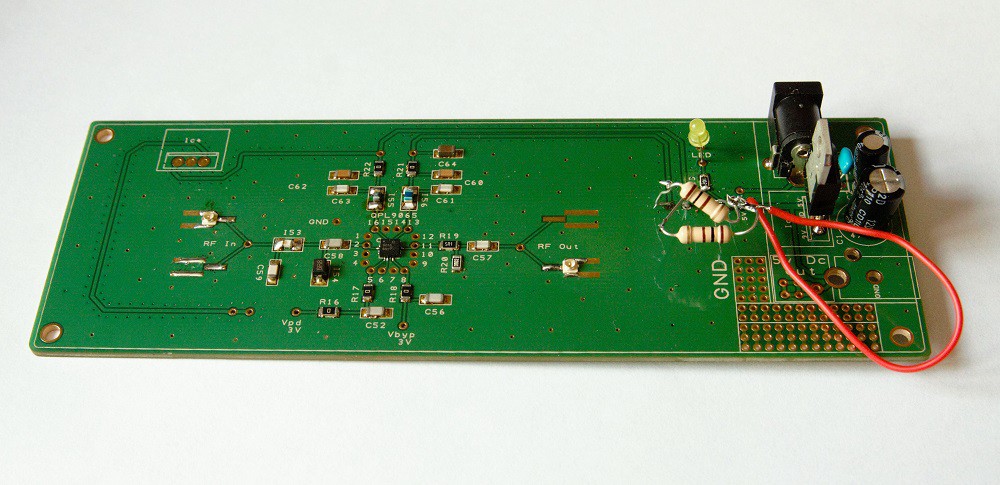 I also tried this variable gain amp, the Analog devices HMC742A, but I've not got it to work yet:
I also tried this variable gain amp, the Analog devices HMC742A, but I've not got it to work yet: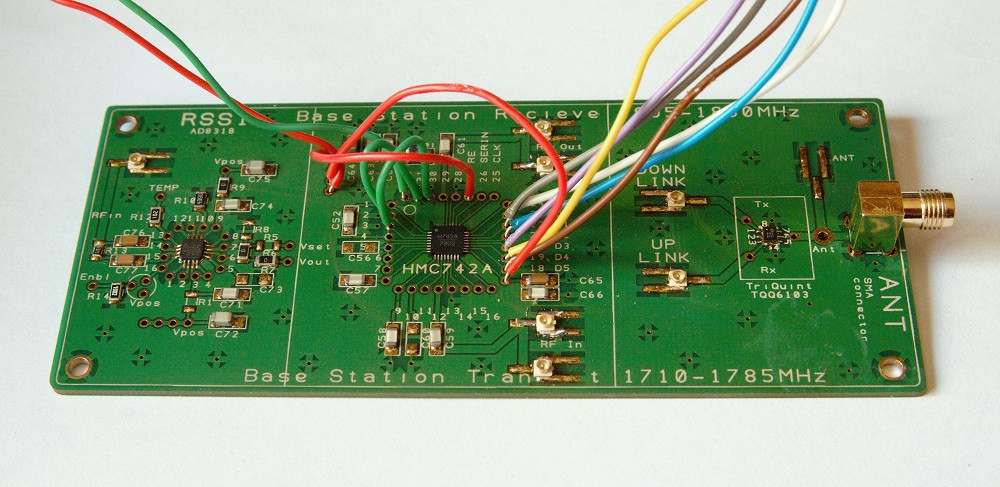 All the boards above are DIY custom design for testing purposes and can be linked together using U.FL RF cables to produce cascades.
All the boards above are DIY custom design for testing purposes and can be linked together using U.FL RF cables to produce cascades.